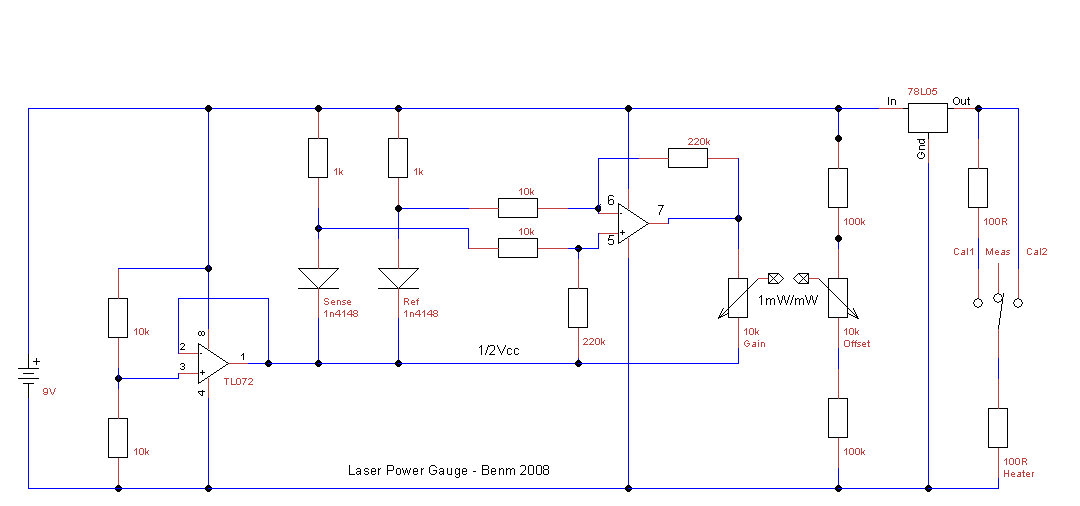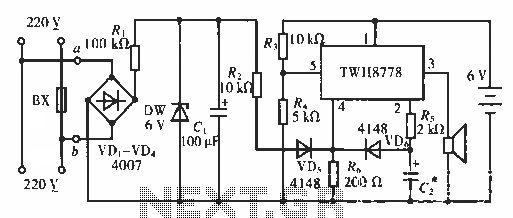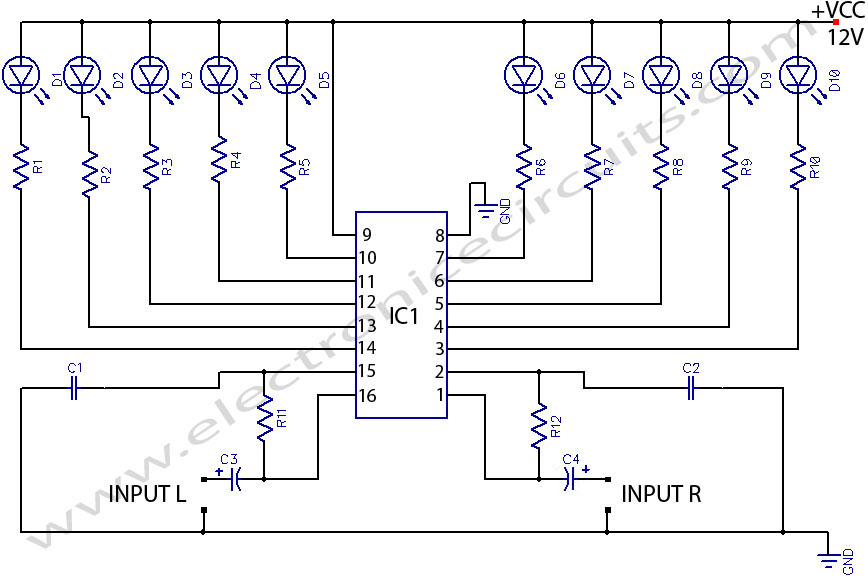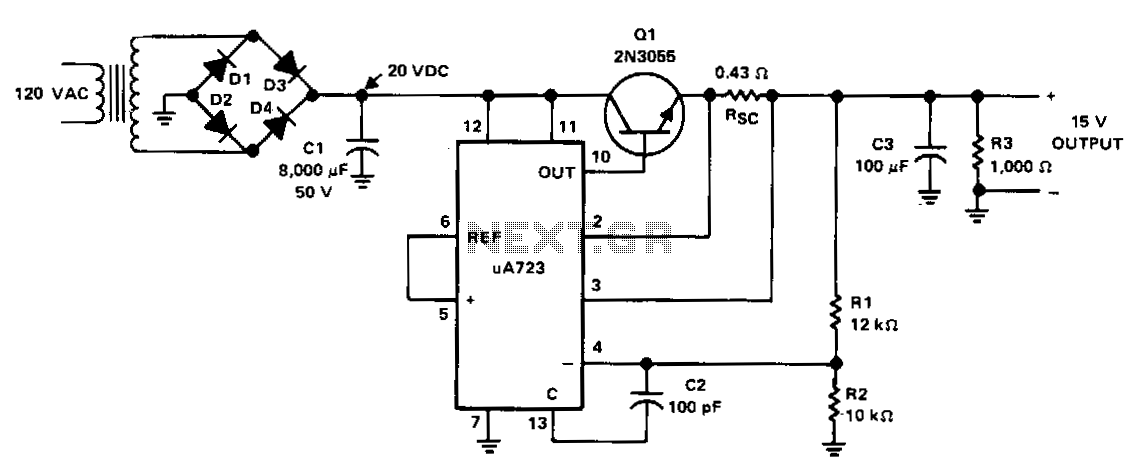
Three-Level Audio Power Indicator circuit
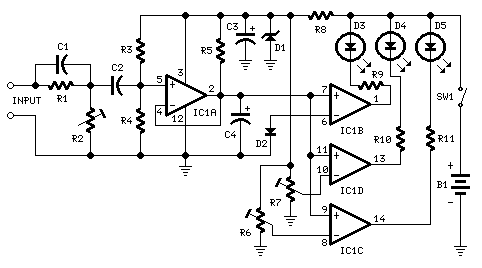
This circuit is designed to indicate the power output level of any audio amplifier. It is simple, portable, and displays three power levels that can be set to any desired value.
The circuit operates by utilizing a combination of resistive voltage dividers and LED indicators to provide a visual representation of the amplifier's output power. The design includes three distinct thresholds, each corresponding to a specific power level. These thresholds can be adjusted to meet the requirements of varying audio amplifiers, allowing for flexibility in its application.
The input signal from the audio amplifier is fed into a voltage divider, which scales the voltage down to a manageable level suitable for processing. The output from the voltage divider is then compared against preset reference voltages using a comparator circuit. Each comparator output drives an LED indicator that illuminates when the corresponding power level is exceeded.
The circuit can be powered using a standard battery or a DC power supply, enhancing its portability. The use of low-power components ensures minimal energy consumption, making it suitable for extended use in various environments. Additionally, a calibration feature may be included, allowing users to fine-tune the threshold levels to match the specific characteristics of the audio amplifier being monitored.
Overall, this power output level indicator circuit is an effective tool for audio professionals and enthusiasts, providing real-time feedback on amplifier performance and ensuring optimal operation within safe power limits.This circuit is intended to indicate the power output level of any audio amplifier. It is simple, portable, and displays three power levels that can be set to any desired value.. 🔗 External reference
The circuit operates by utilizing a combination of resistive voltage dividers and LED indicators to provide a visual representation of the amplifier's output power. The design includes three distinct thresholds, each corresponding to a specific power level. These thresholds can be adjusted to meet the requirements of varying audio amplifiers, allowing for flexibility in its application.
The input signal from the audio amplifier is fed into a voltage divider, which scales the voltage down to a manageable level suitable for processing. The output from the voltage divider is then compared against preset reference voltages using a comparator circuit. Each comparator output drives an LED indicator that illuminates when the corresponding power level is exceeded.
The circuit can be powered using a standard battery or a DC power supply, enhancing its portability. The use of low-power components ensures minimal energy consumption, making it suitable for extended use in various environments. Additionally, a calibration feature may be included, allowing users to fine-tune the threshold levels to match the specific characteristics of the audio amplifier being monitored.
Overall, this power output level indicator circuit is an effective tool for audio professionals and enthusiasts, providing real-time feedback on amplifier performance and ensuring optimal operation within safe power limits.This circuit is intended to indicate the power output level of any audio amplifier. It is simple, portable, and displays three power levels that can be set to any desired value.. 🔗 External reference
